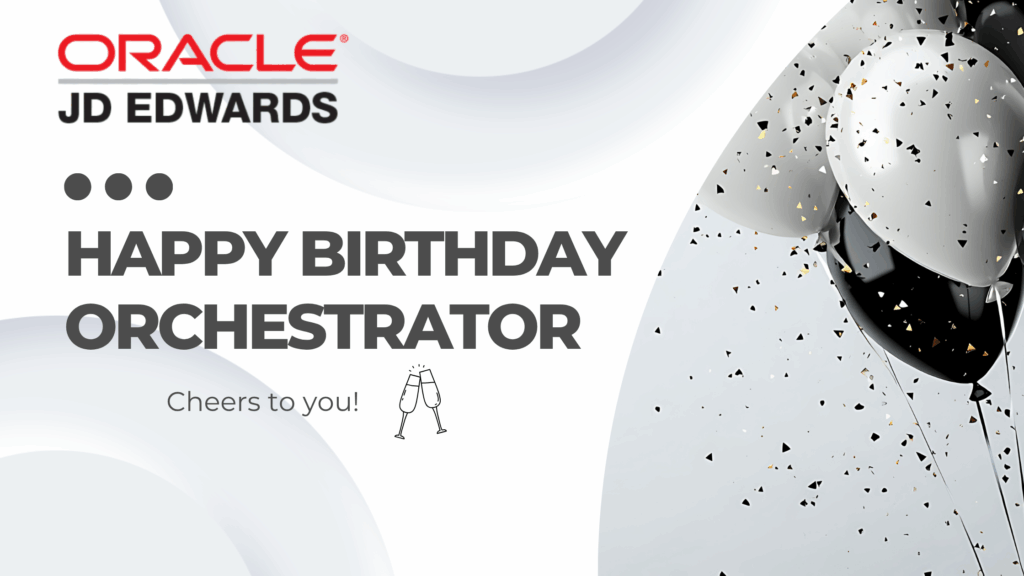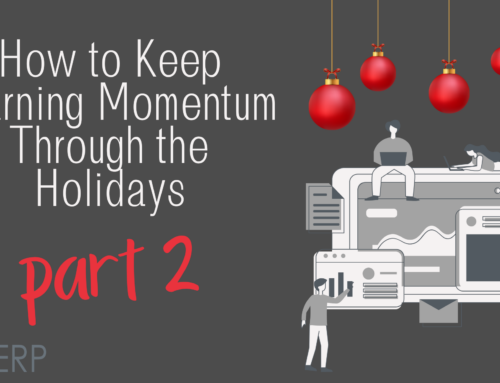
Celebrating 10 Years of JD Edwards Orchestrator
This year marks an incredible milestone: JD Edwards Orchestrator turns 10 years old! Over the past decade, Orchestrator has grown from a new, niche tool into one of the most powerful features of JD Edwards EnterpriseOne, transforming the way organizations automate processes, integrate data, and empower their users.
A Brief History
Orchestrator first appeared around 2015 (as the Internet of Things Orchestrator), aimed at helping JDE customers connect devices and external systems directly into EnterpriseOne. What began as a forward-looking tool for IoT quickly became so much more.
By simplifying integration and automating repetitive tasks, Orchestrator allowed companies to move away from heavy customizations and toward lighter, more agile processes. Early adopters saw its potential not just for IoT, but for day-to-day business automation.
The Evolution of Orchestrator
Over the years, Orchestrator has evolved into the automation backbone of JDE. Some key milestones include:
- Integration Expansion: Evolving from IoT to handle APIs, third-party systems, and cloud services.
- User Enablement: Business analysts and power users, not just developers, can now create orchestrations with little to no coding.
- Robust Capabilities: Orchestrator Studio Components such as, Form Requests, Data Requests, Reports, and Attachments have made it easier to create end-to-end automated processes. Rules have given the ability for Orchestrations to create conditional logic for more complex processing. Notifications have extended communications within JD Edwards with links, reports, and task tracking. Logic Extensions have increased the power of EnterpriseOne to add Logic directly into applications that doesn’t exist for a company’s needs. And finally, the ability to call Orchestrations form external sources, from Form Extensions and EnterpriseOne pages have made the Orchestrator a game changer for companies.
- Release Enhancements: With every new JDE release (like 9.2 and now Release 25), Orchestrator has gained richer tools, Workflows, Stateful Orchestrations, and embedding insights directly into user dashboards with Widgets.
What was once a side feature has become a core pillar of JD Edwards’ digital platform strategy.
Orchestrator Today
In 2025, Orchestrator is no longer “nice to have”—it’s a must-have for organizations looking to:
- Automate manual processes
- Integrate JDE with other enterprise systems or cloud apps
- Deliver real-time insights through Widgets and the Enterprise Automation Framework
- Empower users with tools that adapt to their workflows
Across industries, companies are leveraging Orchestrator to reduce costs, improve accuracy, and increase efficiency—all while making JD Edwards more user-friendly and future-ready.
Looking Ahead
As JD Edwards continues its journey, Orchestrator is expected to play an even bigger role in enabling automation, AI integration, and digital transformation. With its low-code approach, it ensures JDE customers can adapt quickly, innovate faster, and get more value from their ERP.
At iLearnERP, we’re proud to have supported clients throughout this journey with training, resources, and hands-on learning to make Orchestrator approachable and impactful.
Ready to Learn More?
To celebrate Orchestrator’s 10-year milestone, explore our training opportunities:
- Live and Virtual Training: Comprehensive training options with customizable agenda options.
- EOne Academy: Comprehensive, self-paced learning on Orchestrator and more.
- Learn It Live: Interactive sessions with real-world scenarios and expert instruction.
✨ Here’s to the next 10 years of Orchestrator—helping JD Edwards customers work smarter, not harder.
If you have any questions, contact us HERE.




